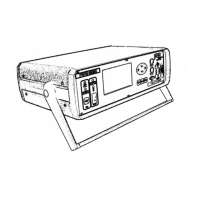7Impacts on the accuracy of the measurement 16
7 Impacts on the accuracy of the measurement
Be sure, that there is no shadow (even not the smallest) affecting the module under test. Even the shadow of
grass may cause an error! This is also true for the reference sensor. Please consider that also a contamination
of the modules becomes effective as shading.
The higher the irradiance to the module, the more exact will be the result. The irradiance measured by the
combined sensor should be higher than 500 W/m2 for good results.
The combined Phox/Pt1000 sensor measures the irradiance and the cell temperature at the back side of the
irradiance reference cell. If no external temperatur sensor for the measurement of the back side temperature of
the module under test is available the PVPM expects the temperature of the reference cell to be nearly the
same as that of the measured module. This will be true with sufficient precision if the reference cell and the PV
module were exposed to the sunlight for same period of time (at least 15 minutes).In addition before a
measurement modules and reference cell should be exposed directly aligned to the sun for more than 15
minutes. For sureness the backsurface temperature of the module should be additionally checked before the I-
V-curve measurement e.g. with an infrared thermometer.
The angle of the module regarding the sun should be in an range of 10° regarding the right angle between
sunlight and module surface. Very important is a sufficient irradiance to the module and precise alignment of the
reference cell towards the module. Often the easiest way is to clip the combined sensor directly to the side or
top of the frame of the measured module. However the sensor may also be installed in some distance to the
module if you can grant the correct alignment and the sensor does “see” the same light as the module.
Principally the irradiance reference must have the same spectral behavior than the module under test
(according to IEC 60904). It is possible to use a module like that under test as irradiance reference: the module
will be short circuited by a small precision shunt resistor which will operate the module near the I
sc
. The voltage
at the shunt resistor is proportional to the I
sc
and so to the irradiance. That is how most irradiance reference
sensors work.
Caution: even a few degrees deviation in the temperature of the reference cell towards the module
temperature can cause a significant error in peak power measurement. Before a you make a
measurement be sure, that the reference sensor and the module were exposed to the same ambient
conditions for a sufficient period of time!
You can enhance the precision of the PVPM results by measuring the same object several times (e.g. 5 times)
and after that do a statistical evaluation on these results.
Given below are once more the parameters, that are decisive for the accuracy of the measurements:
Operation manual for PVPM devices PV-Engineering GmbH

